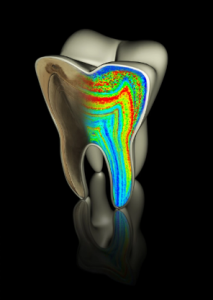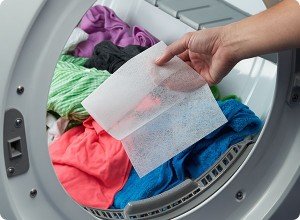Neighborhoods across the U.S. dangerously contaminated by lead fallout, says USA TODAY!
26 min read
(USA TODAY) Kathleen Marshall used to think the fenced backyard of her Philadelphia home was a safe place for her five children to play. Not anymore.. Marshall was horrified to learn that a long-forgotten factory once melted lead just across the street and that soil tests by USA TODAY indicate her yard is contaminated with hazardous levels of the toxic metal.
“You’re living here and you have no idea of what’s really in your ground, what’s in your backyard,” Marshall says now. “It’s just kind of scary to think that you’re sending your kids out to play in an area that’s hazardous.”
Hundreds of soil tests by USA TODAY in neighborhoods near former lead factories show numerous areas where the dirt is so contaminated that children should not be playing in it.
Yet they are.
INTERACTIVE: Explore more than 230 lead-factory sites
VIDEO: USA TODAY’s soil testing findings
PHOTOS: Philadelphia’s Hedley Street neighborhood
Hazardous levels of lead were found in the dirt under a tricycle in Minneapolis; in the dusty doorway of a little girl’s playhouse in Hammond, Ind.; near a dropped baseball bat in a suburban Milwaukee yard; in the outfield of a baseball diamond in New York City.
The soil tests, part of an ongoing USA TODAY investigation, revealed potentially dangerous lead levels in parts of all 21 neighborhoods examined across 13 states. Although results varied house to house, the majority of the yards tested in several neighborhoods had high lead levels — in some cases, five to 10 times higher than what the Environmental Protection Agency considers hazardous to kids.
Children who play regularly in lead-contaminated soil, just by putting dust-covered hands or toys in their mouths, are exposed to a poison studies show lowers intelligence and reduces academic achievement, delays puberty and causes other health problems.
In response to the newspaper’s soil test results, regulators in Kentucky, New Jersey, New York, Oregon and Wisconsin already are taking actions at five old factory sites.
At the national level, EPA assistant administrator Mathy Stanislaus said in a statement the agency will “review USA Today’s information to determine what steps can be taken to ensure Americans are not being exposed to dangerous levels of lead.”
The federal government had been warned a decade ago about the poison likely left behind by more than 400 companies. The factories, often referred to as “smelters,” had operated mainly from the 1930s to 1960s, but federal and state officials did little to find many of the sites, alert residents or test the soil nearby, USA TODAY reported Thursday.
Parents were shocked to learn that factories closed decades before their kids were born could pose a danger. They didn’t know that the fallout of lead particles from factories that melted lead batteries or processed lead in furnaces for pipes and other products could remain for hundreds of years in the top few inches of soil.
The EPA knew about the smelters near Marshall’s home a decade ago but never warned people living nearby and still has not done the soil tests recommended by its own contractors in February 2007.
USA TODAY’s tests throughout Marshall’s neighborhood found potentially dangerous levels of lead in multiple locations — including the small backyard where her children play.
The EPA says there is no immediate threat in Marshall’s neighborhood and that it will begin another round of assessing the safety of the area late this year or early next year.
“EPA does not notify residents of potential contamination based solely on the possibility that past industrial activities may have occurred. This type of approach would unnecessarily alarm residents and community members,” the agency’s Philadelphia regional office said in a written response to USA TODAY’s questions.
The EPA noted it is not uncommon to find high levels of lead in soil in large urban areas because of decades of pollution from sources including flaking lead-based paint and dust from vehicles burning leaded gasoline, as well as by lead smelters and other factories. The EPA is authorized to clean up soil only if it can prove the lead came from a specific industrial release.
The lead found by USA TODAY’s testing likely comes from a mixture of these sources, though old lead factories have proven to be significant polluters.
Regardless of where the lead in soil came from, the human body treats it as poison, particularly if you’re a kid.
The soil tests — and the hazards they revealed
Explore more than 230 old lead-factory sites nationwide, historical maps, soil testing results.
USA TODAY reporters spent two months testing soil in multiple spots in yards, with the permission of residents. The reporters also tested soil at public parks, schools, athletic fields as well as street-side strips of public land within a mile of the sites. Air-blown lead particles often drop in the immediate vicinity of factories, but the toxic dust can travel for miles.
The sites tested came from a list of more than 400 potential lead smelters believed to be unknown to federal regulators because they operated before the creation of the EPA. The list was developed by environmental scientist William Eckel, who published a 2001 article in the American Journal of Public Health warning that the forgotten factories might have contaminated surrounding properties.
Because most of the old smelters had operated for decades without any regulatory oversight and are now gone, little was known about the size of each factory, where they were located, how much lead they processed and how much pollution they left behind.
VIDEO: USA TODAY’s soil testing findings
USA TODAY focused its testing on 21 neighborhoods, a mix of locations that varied from the urban cores of big cities to a small Midwestern town.
The reporters were trained to use $41,000 handheld devices called XRF analyzers to test more than 800 samples of surface soil — the top layer that children’s hands are most likely to touch. The devices shoot X-rays into the soil, which causes the chemicals present to give off a unique fluorescence — like a flash — that is measured by the device. The XRF analyzer is a widely accepted method of testing soil.
Elizabeth Southerland, director of the EPA’s assessment and remediation division in its headquarters Superfund program, said the agency will take a close look at the newspaper’s test results.
To further confirm the validity of the XRF readings, reporters collected nearly 200 soil samples and shipped them to a lab run by soil sampling expert Howard Mielke at Tulane University for a different type of chemical analysis, with the expense covered by USA TODAY.
Under natural conditions, lead is found only in very small amounts in soil. The average inU.S. surface soils is just 19 parts per million (ppm), according to the U.S. Geological Survey.
The soil samples tested using the XRF devices showed several neighborhoods had lead levels greater than 2,000 ppm, topping 3,400 ppm in Cleveland, Portland, Ore., and Carteret, N.J. Mielke’s lab often found higher levels in samples than what the devices showed in the field.
The EPA considers soil a potential hazard in children’s play areas at levels above 400 ppm. Soil below the EPA threshold isn’t necessarily safe: California has set a much lower standard, 80 ppm, using computer models to find a level they say is more protective of children. Of the 21 smelter neighborhoods, 80% had median soil lead levels above California’s benchmark in the XRF tests.
The EPA is aware of the changing science around low-level lead exposures and is awaiting guidance from the Centers for Disease Control and Prevention before any change would be considered to the federal soil hazard level, Southerland said.
Lead levels in the soil samples collected by USA TODAY were generally highest in places like Chicago, Cleveland and Philadelphia — where old inner-city neighborhoods mingled with industrial sites. In addition to lead from old smelters, these densely populated cities would have had far more cars burning leaded gasoline than smaller cities.
In some smelter neighborhoods, the tests found few spots with high lead levels. In St. Paul, the smelter site was near the Mississippi River flood plain, where lead particles may have long ago washed away or been buried by flood-control efforts. Lead levels in tested samples were also generally low around sites in Jacksonville and suburban Tampa.
The addition or removal of dirt in any area, especially through construction or landscaping, can affect how much lead remains at the surface where people —especially children — are most likely to be exposed.
The danger posed to kids
What blood tests show
A blood test can measure a child’s lead exposure, which at low levels produces no obvious symptoms. Whether children are routinely tested can depend on where they live and on perceptions about their risk for lead poisoning. Many children who should be tested aren’t. Even when tested, parents may not be alerted to early signs of danger.
What you can do
Insist on results: When your child receives a blood-lead test, make sure the health care provider gives you specific results. Too many providers tell parents a lead test is “negative”or “normal” — when the result shows a low, but potentially worrisome level of lead. Parents need “to obtain the exact number of their blood-lead value,” said John Rosen, professor of pediatrics at theChildren’s Hospital at Montefiore in New York City.
Beware of old standards: Many parents aren’t alerted if a blood-lead level is below 10, a standard set by the Centers for Disease Control and Prevention in 1991. In January, scientific advisers to the CDC recommended reducing that standard to 5. Lead poisoning researcher Bruce Lanphear says children should have a blood-lead level of 1 or less, but those living in older homes with deteriorating paint or in areas with contaminated soil will have more difficulty avoiding exposure.
Know the new science: A recent review of studies by the National Toxicology Program, a federal health agency, found “sufficient” evidence that exposure by children to small amounts of lead — in some cases less than half the CDC’s 20-year-old action level — is associated with decreased intelligence and academic achievement, and an increased incidence of ADHD, behavioral problems and other health issues.
“The evidence in this report is that the elimination of all lead exposure in our environment is our best course of action,” said Andrew Rooney, a senior health scientist at the program.
Prevent exposure: Don’t wait for a blood test to show that your child has been exposed before taking simple actions to look for lead hazards and make your home and yard safe. “Waiting for them to hit a number, whatever number, is too late,” said Mary Jean Brown, chief of the CDC’s lead poisoning prevention branch. Keep children away from bare soil by planting grass or covering it with a thick layer of mulch; make sure their hands and toys are washed frequently; inspect homes for flaking lead-based paint; and wet-mop floors and windowsills regularly to reduce contaminated house dust.
Even trace amounts of lead — particles so tiny they’re barely visible — are enough to cause irreversible health problems in kids who ingest or inhale them.
Swallowing just 6 micrograms of lead particles a day over about three months can raise a child’s blood-lead level by up to 1 point — which in turn can result in the loss of up to 1 IQ point, according to California’s Office of Environmental Health Hazard Assessment. That’s why the state lowered its soil standard to just 80 ppm.
To visualize how little lead that is, picture a packet of artificial sweetener, which contains 1 gram of powder. A microgram is one-millionth of a gram.
“Just touching the surface (of the soil), you get enough to make a difference in exposure,” Mielke said.
A study Mielke published several years ago found children’s hands picked up high levels of lead — up to 30 micrograms during a play session outdoors in soil at day care centers in inner-city New Orleans.
Children 6 and younger are at greatest risk because they routinely put things in their mouths. Their growing brains are also the most susceptible.
“They absorb much more (lead) than an adult … probably because it mimics calcium and iron,” said Bruce Lanphear a leading researcher on lead poisoning at Simon Fraser University in British Columbia.
That’s why parents in neighborhoods in and around historical smelter sites in places like Philadelphia, Portland, Ore., and West Allis, Wis., have reason to be concerned.
In Philadelphia, a worried mom’s story
Kathleen Marshall’s row house is among dozens in the potential fallout zone of two old lead factories that operated for decades along Hedley Street near theDelaware River. USA TODAY’s tests of soil in the area showed dangerous levels of lead contamination.
Across the street from her house, the Thos. F. Lukens Metal Co. made lead pipe, solder and a type of mixed metal called babbitt, from at least 1940 through 1956, and was a battery lead smelter from about 1960-63, according to the Standard Metal Directory.
Less than a quarter-mile away was an even larger factory complex: White Brothers Smelting Co., according to a historical Sanborn fire insurance map. The sprawling complex was listed in the directories as a manufacturer of babbitt and solder, metals that often included lead.
To look at the area today, residents would never know that either factory existed. The land where White Brothers once stood is largely vacant; a couple of small businesses sit atop the Lukens site.
MORE: Map, video, photos of Thos. F. Lukens site
USA TODAY tested 35 samples of soil around homes in a two-block stretch of Hedley Street. Twenty-seven of the samples contained elevated amounts of lead, ranging up to more than 2,000 ppm.
“Something’s got to be done. It’s got to be fixed,” said Joseph Gallagher, whose 4-year-old son, Brady, used to play in the bare dirt of their home’s small backyard. USA TODAY tested three spots in his yard, which showed 476 ppm to 771 ppm of lead.
Marshall and her family live less than a block away. Tests of four soil samples in their small backyard — strewn with toys and bicycles — had lead levels of 501 ppm to 842 ppm.
“They’re always digging in it — the baby, too,” she said.
Marshall’s baby, Kevin, had his blood tested Aug. 6, at 19 months old. It showed his blood-lead level was 7.5. That level of lead exposure is associated with decreased IQ and an increased incidence of ADHD and other issues, medical studies show.
The Children’s Hospital of Philadelphia, where the tests were done, didn’t call Marshall to let her know. She learned the results from USA TODAY, which got them with Marshall’s permission from information the hospital filed with the state health department. Children’s Hospital doesn’t routinely notify parents unless a child’s blood-lead level is a 10 or higher, said Lisa Biggs, the hospital’s medical director of primary care. That’s because the CDC set 10 as the level of concern back in 1991 — before more recent studies showed significant harms at lower levels. In January, CDC scientific advisers recommended lowering the blood-lead action level for children from 10 to 5.
“The whole thing is crazy,” Marshall said. “I think if there’s any lead in their system you should be notified.”
Contractors for the EPA went looking for the White Brothers factory in 2005, federal records show. The agency produced no records showing it looked for the nearby Lukens Metal factory.
The 2007 contractor’s report erroneously placed White Brothers about a quarter-mile northeast of where it was. The contractors fingered what was actually the former site of a different manufacturing plant, historical maps show. They recommended the EPA do soil sampling in the nearby neighborhood. In a written response to questions, the agency acknowledged the sampling never happened and said it plans to reassess the site later this year or early next year.
In the meantime, the Philadelphia Department of Public Health is taking a closer look at lead poisoning around smelter sites featured in USA TODAY’s investigation, said Nan Feyler, the department’s chief of staff. The city’s health department has traditionally focused on deteriorating lead-based paint, which it considers the primary risk to residents.
“We do take seriously, desperately seriously, the risk of lead poisoning of Philadelphia’s children,” Feyler said.
The smell Fred Kuolt will never forget
It’s made breathing hard for his wife and forced him to shut the windows in his suburban Milwaukee home.
Fred Kuolt remembers horrible smells that wafted from Allied Smelting through his suburban Milwaukee neighborhood in the 1950s and 1960s, making it difficult for his wife, Lorraine, to breathe.
“When the wind was blowing from the north or northwest, you would get that odor of sulfuric acid,” said Kuolt, 94. “We had to close our windows in the summertime.”
Allied Smelting recycled lead and lead-acid batteries, and performed lead smelting and other kinds of metal smelting from about 1950 through 1975. Another firm, Grey Iron Foundry, was at the property from about 1946 to 1950, according to state and historical records.
Today, the property is occupied by a window replacement company.
MORE: Allied Smelting map, soil sample results
Private soil tests on the former smelter property in 1996 found lead levels as high as 210,000 ppm, according to results filed with regulators at the Wisconsin Department of Natural Resources. A tree-lined neighborhood of tidy homes, including Kuolt’s, is just across West Lincoln Avenue, to the south of the site.
In 2005, state regulators told representatives for the former smelter property’s owners that they needed to do more tests for soil and groundwater contamination in the area, state records show. The testing was never done and for years regulators never followed up, according to department records.
USA TODAY tested soil in the neighborhood and found potentially dangerous levels of lead in the yards of nearby homes, particularly just south of the smelter in the 2300 block of South 52nd Street. Eight of 14 samples from the yards of two homes had lead levels above the EPA’s hazard standard for children’s play areas.
People living at the homes tested said they had no idea a smelter used to operate nearby or that their yards might be contaminated.
Kuolt said many of his younger neighbors moved in after the smelter closed. “These people today would not even know that that existed,” Kuolt said. Even back then, residents weren’t worried about lead — they were focused on the acid smell, he said.
City building inspection records show that in the 1960s neighborhood residents complained to the city about particulate emissions from the plant, sulfuric acid fumes, noise and other issues.
Following USA TODAY’s inquiries, the Wisconsin Department of Natural Resources in December notified the owner of the former smelter property that soil should be tested in the neighborhood and specifically along South 52nd Street, where USA TODAY found elevated lead levels, records show.
The property owner’s environmental consultant has told state regulators it isn’t his client’s responsibility to do off-site testing for a smelter he didn’t operate, records show. The property owner did not respond to interview requests, including by certified letter.
Paul Biedrzycki, environmental health director for the City of Milwaukee Health Department, said the levels of lead USA TODAY found near the former smelter aren’t surprising and that health officials have long known of the potential for lead to be in urban soils from a variety of sources.
The levels above 400 ppm, especially if children are playing in bare soil, do raise concerns, he said. Yet with limited resources, Milwaukee’s health department, like others around the country, focuses its efforts on lead-based paint, Biedrzycki said.
“The cumulative effect of many of these secondary sources may be the next challenge for public health,” he said. “But I’d say there’s still quite a bit of work to do on addressing lead-based paint as the primary source for high levels in children.”
Lead in a Brooklyn baseball field
Baseball fields in Brooklyn?s Red Hook Park, built atop a historical lead-smelter site, have been temporarily closed while New York City officials inspect and take steps to minimize the risk of lead exposure.
For decades, children had poured onto the baseball fields at Red Hook Park in Brooklyn after school, running the base paths and shagging fly balls. There had been no hint of the potential danger that lies just beneath that grass, where the soil is laced with lead.
It’s been more than 60 years since Columbia Smelting and Refining Works ran its eight furnaces where the fields now sit. Today, lead concentrations in the soil are up to five times greater than the EPA’s hazard level for play areas.
There’s also lead in the nearby grass courtyards of the Red Hook Houses, Brooklyn’s oldest and largest public housing complex, which sits across the street. The sprawling neighborhood of unpainted brick high-rises was built in the 1930s — when the smelter still operated — and today is home to about 6,000 people.
In March, New York City officials closed four ball fields in Red Hook Park after learning from USA TODAY the area was a former smelter site where the newspaper had found elevated levels of lead. The city could have learned a decade earlier that a smelter once occupied the property — both the U.S. EPA and the New York State Department of Environmental Conservation knew about it, but city officials said they weren’t told.
MORE: Columbia Smelting and Refining Works soil results, photos, map
In 2002, the EPA sent an inspector to look at Columbia Smelting’s former location as part of an effort to examine hundreds of suspected smelting sites that had come to its attention. However, the inspector was tasked only with determining whether Columbia was still operating and in need of a waste permit. “HQ smelter initiative, nothing at site,” the inspector wrote in his report on the visit to Red Hook Park.
That marked the beginning and end of any federal effort to determine whether there were lingering effects from the smelting operation.
“The purpose of these visits was to determine if lead smelters were present at these locations and, if so, if these facilities were in compliance” with waste disposal laws, saidJohn Martin, a spokesman in EPA’s Region 2 office in Lower Manhattan, which did the visits. He said the site visits were “not about going out and doing sampling or doing a risk assessment.”
The EPA did share its list of suspected smelter sites, including the Red Hook Park location, with the New York DEC. But the department said it had no records of investigating or visiting the Red Hook Park site.
USA TODAY tested soil in the park and found elevated levels of lead in six of eight samples taken from the ball fields stretching across the site where the smelter was located. Four of those soil samples, all taken just beneath the ball fields’ outfield grass, showed lead concentrations above 2,000 ppm — five times the EPA’s hazard level for children’s play areas. Elsewhere in the park, levels were generally lower.
Across the street, in grassy areas of the Red Hook Houses, six of 16 soil samples tested from throughout the public housing complex had lead levels above 400 ppm.
New York City officials said they were unaware a lead-smelting business had once occupied a portion of the park. The city did its own soil tests and confirmed USA TODAY’s findings, identifying lead concentrations as high as 2,000 ppm at the ball fields.
The fields will be closed for six to eight weeks while the city puts clay and new grass over exposed dirt as interim steps to minimize lead exposure risks, said Deputy Parks and Recreation Commissioner Liam Kavanagh. Ultimately, “we’re looking for a more permanent solution, which will probably involve reconstructing the fields so you would eliminate any elevated lead readings.”
In response to public records requests from USA TODAY, neither the EPA nor the DEC produced documents indicating that information gathered in 2002 about former smelting sites was shared with local officials in New York City or other communities.
“If we had known that there was a potential for some soil contamination as a result of a prior use of the site, I’d like to think that we would have taken the actions we’re taking now,” Kavanagh said.
A 30-year veteran of the city parks department, he said he was “surprised” to learn about the smelter and soil contamination at Red Hook Park from USA TODAY.
The risk of significant lead exposure to children playing in the area is low, because the ball fields don’t tend to be used by toddlers, who are likely to handle the dirt or put toys and fingers in their mouths, said Daniel Kass, deputy commissioner at the city’sDepartment of Health and Mental Hygiene. Risks are similarly low in the residential development across the street, he said, because children’s play areas are paved and young children don’t dig in the grassy courtyards where USA TODAY found elevated lead levels.
Kass also noted that lead poisoning rates for children in the neighborhood have been lower than many other parts of the city and no cases have been traced to contaminated soil. Still, he added, city officials “would have liked to have known” about the old smelter site when state and federal officials first became aware of it 10 years ago.
“We take all potential sources of exposure seriously,” Kass said. He noted that the parks department’s immediate closing of the contaminated ball fields was appropriate and the city would have “responded quite similarly” if it had learned of the problem in 2002.
“It’s always better to have the information,” Kass said.
In Carteret, N.J., the dust ‘was everywhere’
Alex Marciniak’s grandmother used to complain about the dust that spewed from the smelting plant across the street from her home in Carteret, N.J. When the wind blew towardsthe modest row houses in their working-class neighborhood, the dust would foul laundry hanging in the yard. It coated people’s cars, blew into their houses. It was everywhere.
“We’d have to close all the windows in the house because it was hard to breathe,” Marciniak, 43, recalled of his childhood.
The smelting operation for 80 years “spewed forth enormous amounts of contaminating materials,” a federal judge concluded in a June 2009 ruling on a lawsuit over the impact of the plant’s historical operation on parts of the site it once occupied. “Even after (pollution) controls were put in place, the controls were inadequate, defective, and often non-functional.”
At the height of its operations, more than 500,000 tons of scrap metal were fed into its smelters each year, state records and court documents show.
“Observed heavy … emissions (100% opacity) from the smelter building,” an inspector from the New Jersey Department of Environmental Protection reported after a 1982 inspection. “The observations … were not unusual. I have been observing and reporting these problems for at least three years now.”
Local regulators found similar problems. In 1984 alone, the Middlesex County (N.J.) Department of Health cited U.S. Metals for 134 violations of air-quality standards due to excessive emissions from smelter smokestacks.
MORE: U.S. Metals photos, video, map, soil sample results
In 1988, U.S. Metals signed a legal agreement to clean up the smelter site; subsequent soil tests on the property showed lead levels as high as 90,000 ppm. Tons of contaminated soil were removed from the factory property.
But regulators never checked to see whether the yards of homes across the street or down the block were contaminated.
Unlike most of the smelter sites on Eckel’s list, U.S. Metals continued operating until 1986 — long enough to hit the radar of regulatory agencies.
USA TODAY tested 41 soil samples from eight yards and public rights-of-way in and around the Chrome neighborhood, which begins across the street from the U.S. Metals site. Twenty-one of those tests showed lead concentrations of 400 ppm to nearly 1,000 ppm.
In response to USA TODAY’s findings, the New Jersey Department of Environmental Protection has ordered soil testing in the neighborhood later this year. The work will be done by Freeport-McMoRan Copper & Gold Inc., which became the corporate parent of U.S. Metals more than 20 years after the smelting plant was shut down.
“We reached out to the responsible party as a result of USA TODAY’s inquiry,” said Lawrence Hajna, a department spokesman.
Freeport-McMoRan said in a statement that it is cooperating with the state DEP and expects to take several months to set up a testing program. It noted that lead found by USA TODAY could be from other industries, lead-based paint from older houses or long-ago emissions from vehicles using leaded gasoline.
In the meantime, Alex Marciniak worries about his daughter, still in elementary school. Waving toward the vacant lot, green and inviting, behind his house, he said: “I wouldn’t let her play back there.”
Hilda Rosa Burgos, a nurse with a 6-year-old son, echoed his concerns after being informed about elevated lead levels in her yard. “My son used to … go out and play in the dirt, play back in the corner of the yard, and now we can’t do that. … I’m confused, I don’t feel safe.”
Test results prompt Kentucky to investigate
The blockish two-story brick building next to a row of homes along West 12th Street in Newport, Ky., does little to call attention to itself. Nearly all of the windows are covered with plywood, painted gray to match the brick.
A sign is tacked above a boarded-up doorway: “L&H Tool & Die Co.”
In 1910, however, it was the Newport Foundry Co., historical fire insurance maps show. From at least 1949 to 1954, industry directories show the site was home to Certified Metals Mfg. Co., which made babbitt and solder, mixed metals that often contained lead.
Soil tests in nearby residential yards showed lead levels that could be hazardous to children. Of 30 samples taken at five homes within about two blocks of the former foundry, 19 topped 400 ppm on the XRF analyzer and reached as high as 1,084 ppm.
MORE: Newport soil sample results, photos, map
The soil was wet from days of rain at the time USA TODAY did its XRF sampling, and water in soil can cause the device to undercount lead. Six samples collected from the same area and sent to Tulane University showed even higher levels, up to 2,485 ppm, in all but one case.
People who live near the old factory said they never knew it once made lead products and are now concerned about the lead in nearby yards.
“If it’s a problem, I want it taken care of,” said Debra Winkle, who lives a few doors down. Although no children currently play in her yard, she hopes someday to have grandchildren who will. “I want them to be safe,” she said.
Environmental regulators at the Kentucky Division of Waste Management said they were unaware of the former foundry site until they were contacted by USA TODAY — despite it being on Eckel’s list.
After hearing about the soil test results, the state has opened an investigation of the site and potential sources of lead contamination in Newport, said Tim Hubbard, the division’s assistant director.
“Looking at the data overall, the results are not too surprising for what you might expect to see in lead levels in an urban area,” Hubbard said. “Obviously some were higher than one would like to see in any kind of setting.”
One of the difficulties of the investigation, Hubbard said, is that the lead found by USA TODAY’s tests could have come from a variety of sources. A scrap metal firm is also nearby.
Hubbard said his department could be put in a difficult spot if it finds dangerous levels of lead in residential yards — and if no obvious polluter can be definitively held responsible for a cleanup. Kentucky has only about $400,000 a year to spend on state-funded cleanups.
“If we determine there are levels out there that need to be addressed and it is not safe to leave them where they are … then something will be done. That’s the bottom line,” he said.
L&H Tool and Die is a division of a Cincinnati metalworking firm, Seilkop Industries. Dave Seilkop said his company bought L&H Tool and Die, which produces aluminum stampings, in 1998, and was unaware of the Newport property’s previous uses.
State health department reports show the area where the foundry once operated has been considered a high-risk area for lead poisoning. Local health officials said they think the biggest problem in the area is lead-based paint, which was widely used until the 1950s and banned from residential use in 1978. Newport, which is across the Ohio Riverfrom Cincinnati, was founded in 1792.
“If it’s in the soil … an obvious primary factor is paint coming from the house structure,” said Steve Divine, environmental health director for the Northern Kentucky Health Department.
When investigating cases of lead-poisoned children, the department doesn’t always test the soil, Divine said. Sometimes there is no yard, or the yard has a good cover of grass over the soil, he said.
Since 2001, the department has investigated cases of lead-poisoned children at 27 homes in Newport’s 41071 ZIP code, where the former smelter is located. Of those, 13 homes had their soil tested by the inspectors, and 10 yards had lead levels above the 400 ppm hazard standard.
Still, Divine said: “Our experience is the primary culprit has been the lead paint in the structure.”
Hazards in a suburban Portland neighborhood
Barbee Williams has lived next door to a former smelter site in Portland, Ore., for 22 years. Three soil tests showed lead levels over 1,000 ppm in her yard.
The lawns on and around the site of the old Multnomah Metal Works in Portland, Ore., are green and well tended, rolling out from homes that can fetch $250,000 or more. There’s no sign of the smelter that operated in the neighborhood for 65 years.
The old smelter building was demolished in 1975; the next year, a duplex home was built there, state records show. Regulators from the Oregon Department of Environmental Quality (DEQ) discovered there had been a smelter at the site in 2002, while investigating another Multnomah Metal Co. address that turned out to be an office and storage yard.
Inspectors took four soil samples on the site in 2003 and all were above the EPA’s residential hazard standard for children’s play areas — including one spot that showed 5,120 ppm.
“Given the … consistently high lead concentrations across the site, I consider the soil unacceptable for industrial/commercial or residential use,” DEQ toxicologist Mike Poulsen wrote to agency officials in a 2003 e-mail. “Further characterization of onsite and possibly offsite soils is warranted.”
MORE: Multnomah Metal Co. soil sample results, video, photos
In a separate memo, Christopher Blakeman, a DEQ project manager, noted that “children … may be exposed to potentially threatening levels of lead in soils and/or dirt transferred into the home. Pregnant women may also face similar exposure threats.”
The state did no further testing. It never told the neighbors about the contamination or forced a cleanup, the DEQ acknowledged in response to USA TODAY’s questions. The department’s only follow-up action was to list the site on its public registry of contaminated properties.
The DEQ can issue a legal order requiring a site on the registry be cleaned up, and it generally would be the property owner’s responsibility, said Chuck Harman, a DEQ remedial-project manager who helps supervise properties on the list. The department has taken no legal action on the Flower Street property.
USA TODAY’s testing at the former smelter property and in nearby yards found high levels of lead. Tests in the yard of the duplex that sits atop the former smelter site found lead levels that peaked above 7,400 ppm. All 14 soil samples tested from the property showed lead levels above 400 ppm. At two nearby homes, 11 of 17 samples showed lead levels ranging from 400 ppm to above 1,100 ppm.
In response to USA TODAY’s test results, the DEQ has reopened discussions with the owner of the former smelter site about addressing the lead contamination, Harman said this month. It is unclear whether the state will sample any soil on neighboring properties, he said.
The results of the state’s initial soil tests in 2003 “are not really acceptable (lead) numbers,” Harman added. “I’m not sure why back then we didn’t make that decision to pursue that (site) more strongly.”
The site’s owner did not respond to interview requests or a certified letter.
Brian Morgan, a medical student who lives with his wife in one side of the duplex on the smelter property, said he was unaware of the site’s history. “We don’t have kids … so I’m not too worried, ” he said.
Neighbors were concerned, especially that the state didn’t tell them about the 2003 test results.
“Nobody ever has mentioned anything to me about it, I’ve never gotten a letter, nothing,” said Barbee Williams, who has owned a home next to the smelter site for 22 years. Three tests showed lead levels over 1,000 ppm in the soil of her yard.
Williams wonders about the berries, grapes, apples and plums she has grown in soil that might be contaminated. “I wouldn’t have planted a lot of things to eat if I had known that,” she said. “My grandchildren played out there — my grandson was a little boy with trucks, so he played in the dirt quite a bit.”
The DEQ posts its registry of contaminated properties on the Internet and people can search by ZIP code to see whether a polluted site is nearby. Notices generally aren’t sent to neighbors. “There’s not in state law a public notification process for informing neighbors at the time a site is listed,” Harman said.
If the state determines that neighboring properties are contaminated, officials typically would inform the owners, Harman added. But because the state did no off-site sampling around the old smelter, there was no evidence of a problem.
Now Portland residents like Williams understand there is a problem — an awareness she shares with Kathleen Marshall of Philadelphia, Debra Winkle of Newport, Ky., and Fred Kuolt of West Allis, Wis., each of whom was unaware, until now, of the poison in the ground.






